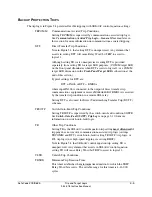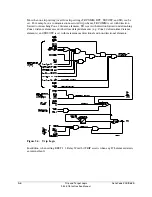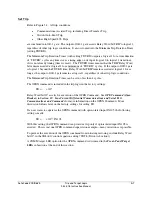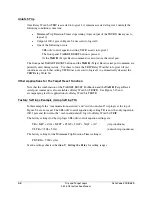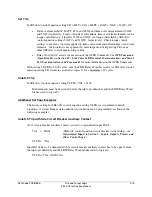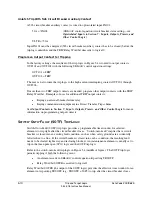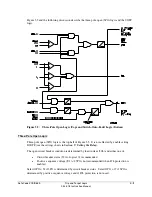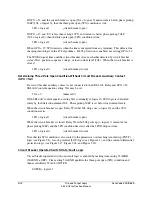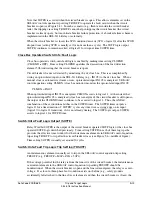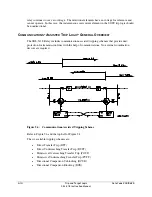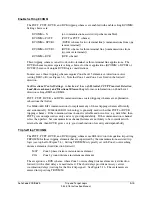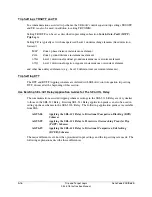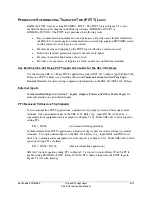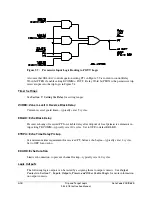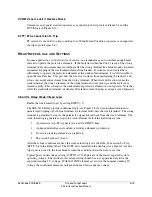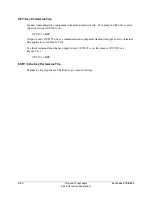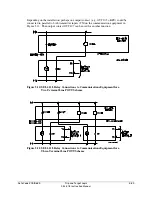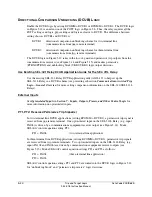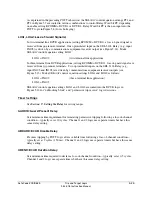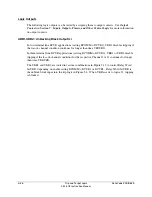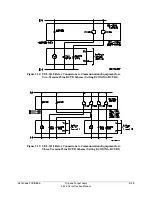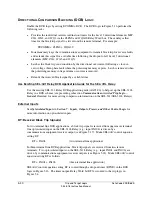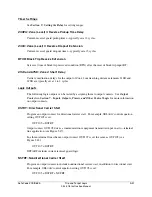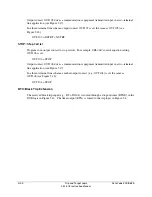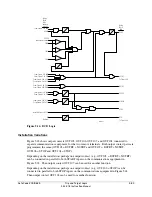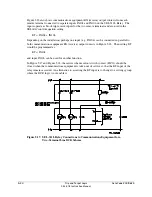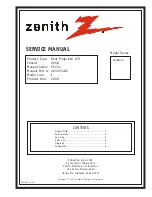
Date Code 20010625
Trip and Target Logic
5-19
SEL-311L Instruction Manual
Z3RB—Zone (Level) 3 Reverse Block
Current-reversal guard asserted (operates as an input into the trip logic in Figure 5.4 and the
DCUB logic in Figure 5.12).
ECTT—Echo Conversion to Trip
PT received, converted to a trip condition for a Weak-Infeed Condition (operates as an input into
the trip logic in Figure 5.4).
W
EAK
-I
NFEED
L
OGIC AND
S
ETTINGS
In some applications, with all sources in service, one terminal may not contribute enough fault
current to operate the protective elements. If the fault lies within the Zone 1 reach of the strong
terminal, the fault currents may redistribute after the strong terminal line breaker opens to permit
sequential tripping of the weak-infeed terminal line breaker. If currents do not redistribute
sufficiently to operate the protective elements at the weak-infeed terminal, it is still desirable to
open the local breaker. This prevents the low-level currents from maintaining the fault arc and
allows successful autoreclosure from the strong terminal. When the fault location is near the
weak terminal, the Zone 1 elements of the strong terminal do not pick up, and the fault is not
cleared rapidly. This is because the weak terminal protective elements do not operate. Note that
while the weak-infeed terminal contributes little fault current, the phase voltage(s) are depressed.
SEL-311L Relay Weak-Infeed Logic
Enable the weak-infeed logic by setting EWFC = Y.
The SEL-311L Relay provides additional logic (see Figure 5.8) for weak-infeed terminals to
permit rapid tripping of both line terminals for internal faults near the weak terminal. The strong
terminal is permitted to trip via the permissive signal echoed back from the weak terminal. The
weak-infeed logic generates a trip at the weak terminal if all of the following are true:
1. A permissive trip (PT) signal is received for ETDPU time.
2. A phase undervoltage or residual overvoltage element is picked up.
3. No reverse-looking elements are picked up.
4. The circuit breaker is closed.
After these four conditions are met, the weak-infeed logic sets the Echo-Conversion-To-Trip
(ECTT) bit in the Relay Word. The ECTT bit is included in the trip logic (see Figure 5.4) and a
trip signal is issued to the local breaker when the conditions described above are true.
Typical phase undervoltage setting (27PPW) is 70–80 percent of the lowest expected system
operating voltage. The residual overvoltage setting should be set to approximately twice the
expected standing 3V
0
voltage. With the 59NW element set at twice the nominal standing 3V
0
voltage, the instrument measures only fault-induced zero-sequence voltage.
Summary of Contents for SEL-311L
Page 6: ......
Page 8: ......
Page 26: ......
Page 54: ......
Page 144: ......
Page 216: ......
Page 252: ......
Page 302: ......
Page 338: ......
Page 480: ......
Page 484: ......
Page 486: ......
Page 502: ......
Page 532: ...12 28 Standard Event Reports and SER Date Code 20010625 SEL 311L Instruction Manual 4 ...
Page 552: ......
Page 554: ......
Page 574: ......
Page 576: ......
Page 596: ......
Page 602: ......
Page 628: ......
Page 656: ......
Page 662: ......
Page 664: ......
Page 688: ......
Page 700: ......
Page 716: ......
Page 722: ......
Page 734: ......

